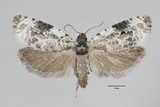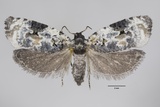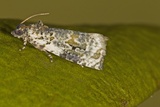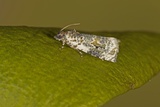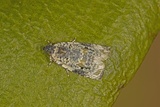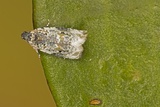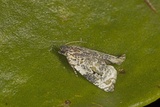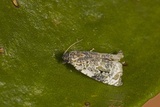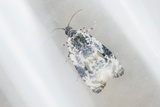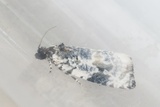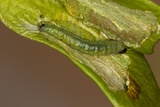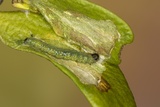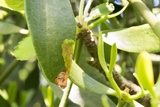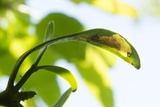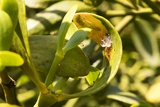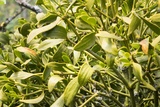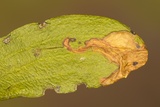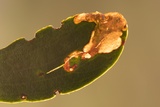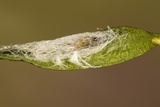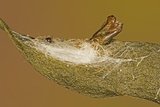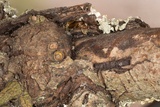Celypha woodiana (Barrett, 1882) Species
Last modified: Oct. 30, 2025, 8:07 p.m.
The correct identification of the only previous find in 1964 at OV is doubtful because the specimen in question can no longer be traced and may be based on an incorrect determination, confusion can happen with some Apotomis species.
See: Van Daele E. & Pelerents C. 1966. Fauna en populatiedichtheid der Tortricidae in het Gentse tuinbouwgebied. — Mededelingen Rijksfaculteit Landbouwwetenschappen Gent 31: 672–693. On page 675.
The first verifiable observation dates from 2019 in LX. At present (2024) it is a very rare and local species in the southern part of LX and the Famenne region in NA.
Given the difficulty in finding the mines and also that the adults are sparingly attracted to light, the species is probably more widely distributed than we have previously assumed, although the occupancy of the species, even where there is a lot of mistletoe present, the species is very local and sparsely distributed.
Details
- Classification
- Family: Tortricidae > Subfamily: Olethreutinae > Tribus: Olethreutini > Genus: Celypha > Species: Celypha woodiana
- Vernacular names
- Maretakbladroller (NL), Mistletoe Marble (EN), La Séricore du Gui (FR), Weißer Mistelwickler (DE)
- First mention in Belgium
- Garrevoet Theo 2024. Celypha woodiana (Lepidoptera: Tortricidae), de facto een nieuwe soort voor België — Phegea 52(2): 85-88. On page 85-88.
- Status
-
Native
Distribution
Imago
Wingspan 16–18 mm. A distinctive species, but it can be confused with Apatomis lineana, which have similar forewing markings, from which it may be distinguished by its smaller size, comparatively narrow forewings with a relatively straight costa, the whiter ground color, and more contrasting darker markings, the dark labial palpi, head, and thorax, and the grey cilia of the hindwing.
Mine
See also bladmineerders.be
In autumn the mine begins as a brown, narrow and inconspicuous, lower-surface corridor. The larva is capable of leaving its mine and restarting elsewhere, possibly in another leaf. In April – May of the following spring a full-depth transparent blotch is made, from which most frass is ejected. The mined leaf soon drops, which makes the mine even more difficult to detect.
Most mines can be found on apple trees or hawthorn trees infested with the food plant.
Bionomics
The eggs are laid by the female on the host plant and the young, newly hatched caterpillars make a small, inconspicuous crescent-shaped tunnel and entrance hole in the underside of the leaf and overwinter here. From the following spring, the active caterpillar further expands the mine into a striking transparent blotch from which most of the frass is removed through an opening in the mine. Later the leaf falls off and the caterpillar pupates between bark or crevices.
Mines are usually found in low densities. The adults can be found resting on trunks during the day and later come sparsely to light.
Flight periods
The adults can be seen from late May till September in one generation a year.
